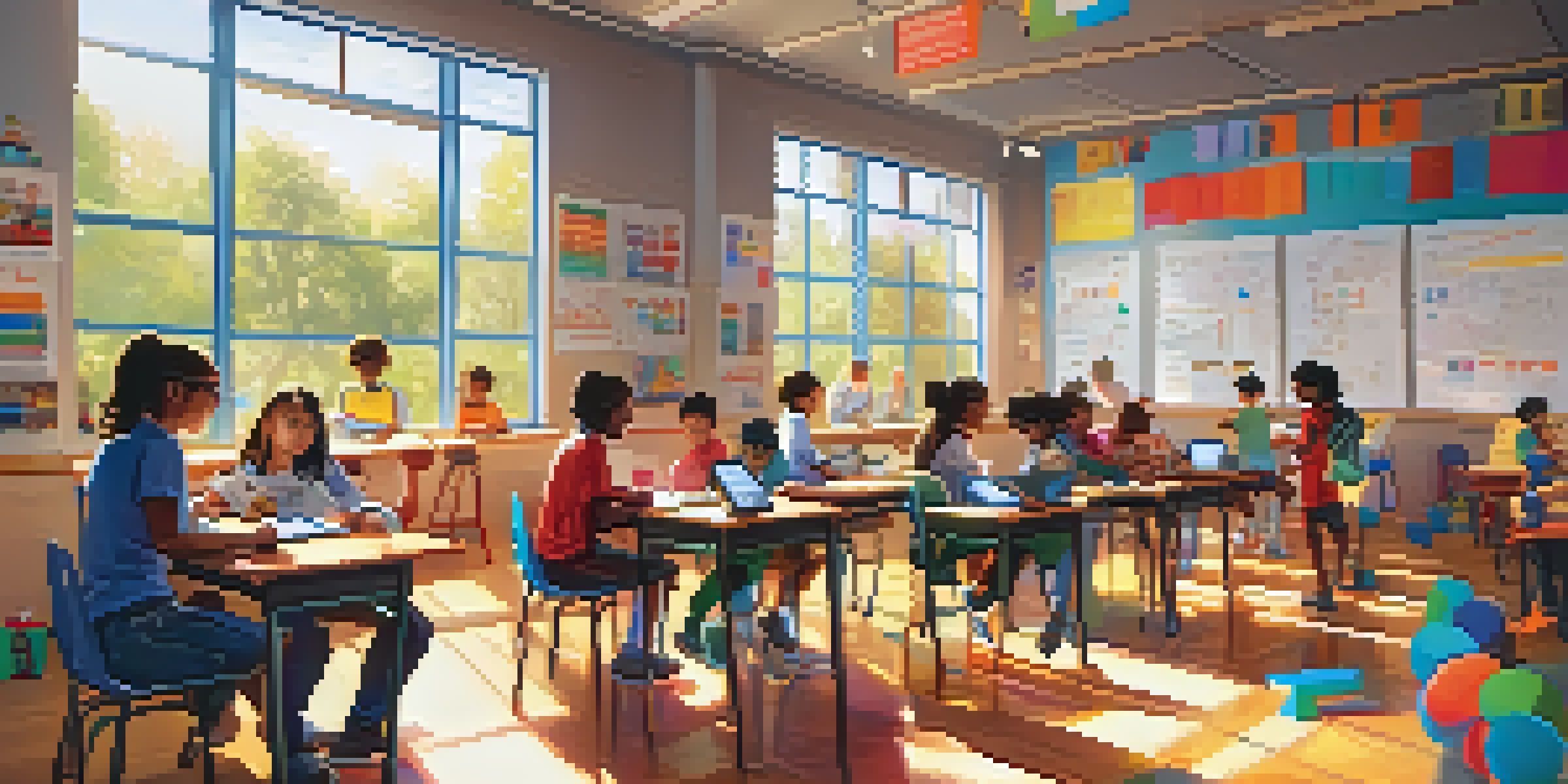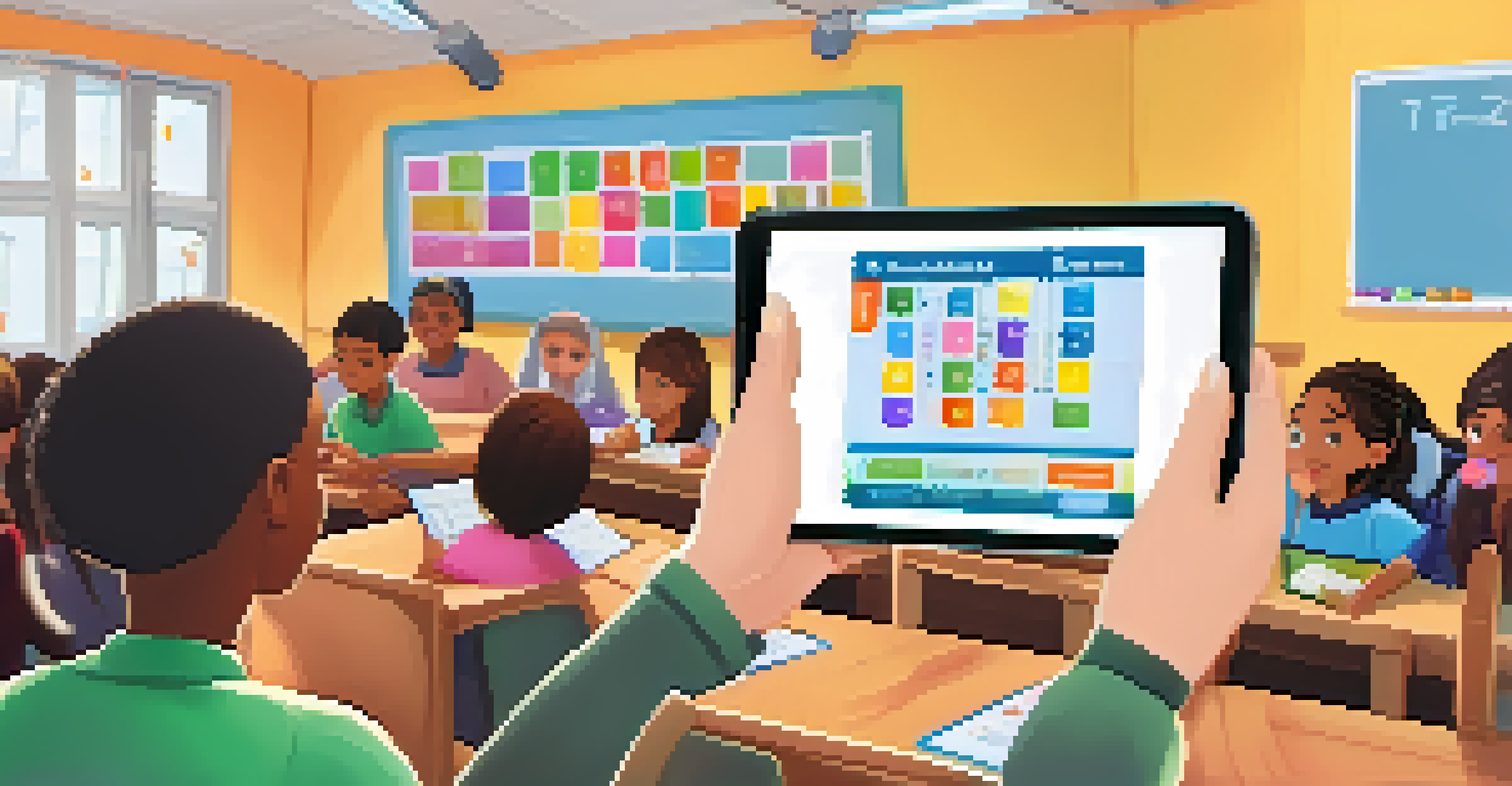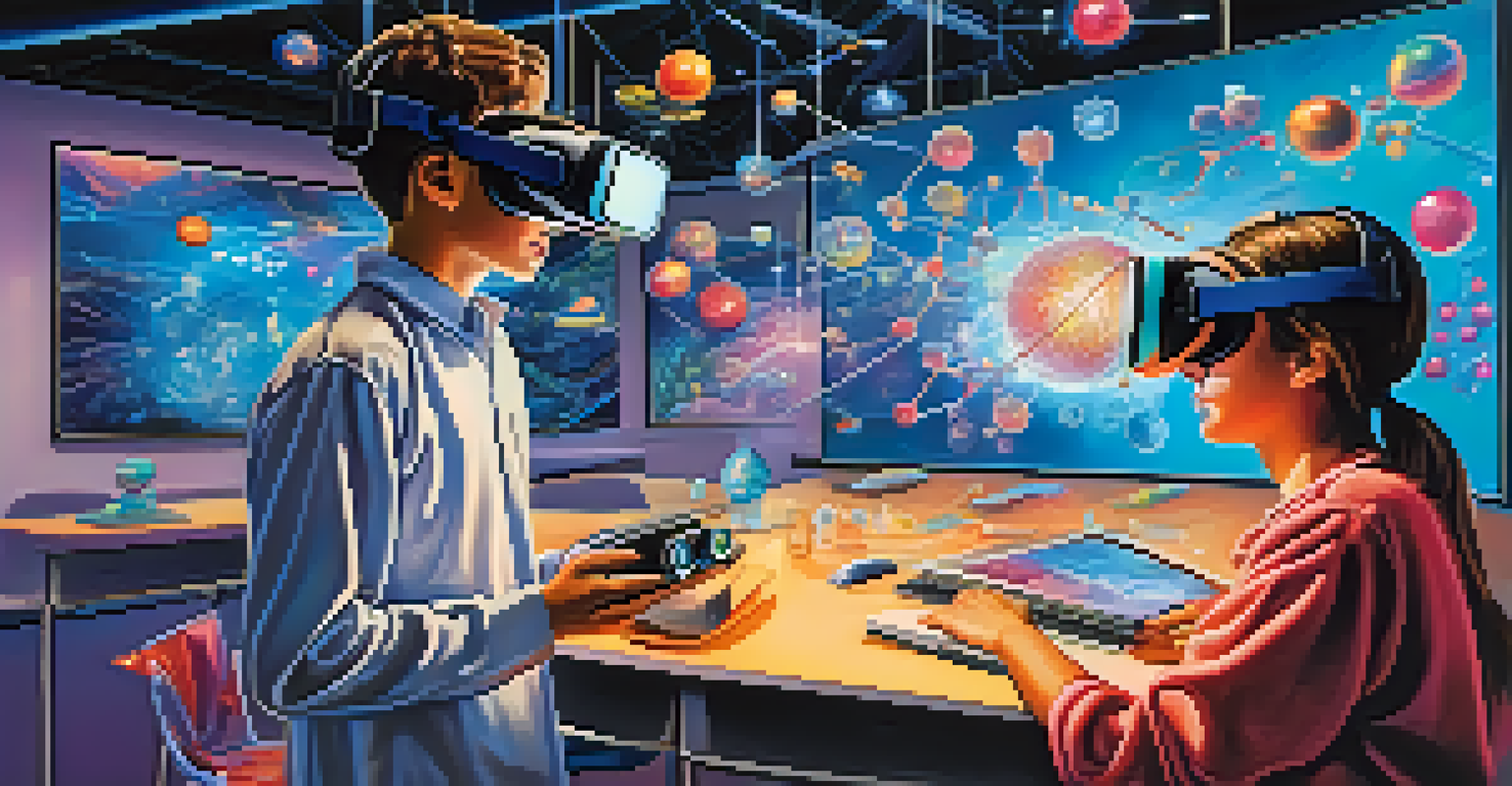Using Gamification to Address Diverse Learning Needs in Classrooms

Understanding Gamification in Education
Gamification in education refers to the integration of game-like elements into learning experiences. This can include points, badges, leaderboards, and challenges to make learning more engaging. By transforming lessons into interactive experiences, educators can capture students' attention and motivate them to participate actively.
Gamification is a powerful tool to enhance the learning experience, making education more engaging and fun.
Imagine a classroom where math problems are solved through a competitive game, where students earn points for correct answers. This not only makes the subject more enjoyable but also encourages collaboration among peers. Such an approach can help nurture a positive learning environment, essential for diverse learning needs.
Moreover, gamification caters to various learning styles, allowing visual, auditory, and kinesthetic learners to thrive. By incorporating these elements, educators can provide a more tailored educational experience that resonates with each student's unique preferences.
Benefits of Gamification for Diverse Learners
One of the primary benefits of gamification is its ability to foster motivation among students. When learners see their progress through points or levels, they often feel more inclined to participate and engage with the material. This is particularly beneficial for students who may struggle with traditional methods of learning.

Additionally, gamified elements can help reduce anxiety around challenging subjects. For example, a student who finds math intimidating may feel more relaxed when solving problems in a game format, as the pressure is alleviated. This sense of play can lead to increased confidence and a willingness to tackle difficult topics.
Gamification Engages Diverse Learners
Integrating game-like elements in education fosters motivation and caters to various learning styles.
Gamification also promotes inclusivity by allowing students to work at their own pace. This flexibility ensures that every learner, regardless of their skill level, can make progress and achieve success in their educational journey.
Designing Effective Gamified Learning Experiences
Creating an effective gamified learning experience requires thoughtful planning and design. Educators should start by identifying the learning objectives and the specific needs of their students. This understanding will guide the selection of appropriate game mechanics that align with those goals.
The more we gamify education, the more we can address diverse learning styles and foster a sense of belonging among students.
For example, incorporating collaborative tasks can encourage teamwork and communication among students. Alternatively, single-player challenges can help students focus on individual mastery of skills. Balancing these approaches ensures that all learners are supported and engaged.
It's also essential to gather feedback from students to refine the gamified elements continuously. By understanding what motivates different learners, teachers can adapt their strategies to create a more effective and inclusive classroom environment.
Integrating Technology in Gamified Learning
Technology plays a crucial role in the implementation of gamification in classrooms. Online platforms and apps offer a wide range of tools that can enhance the learning experience through interactive games and assessments. These resources can be particularly helpful for remote or hybrid learning environments.
For instance, platforms like Kahoot! and Quizizz allow teachers to create fun quizzes that students can engage with on their devices. This not only makes learning more dynamic but also enables instant feedback, helping students understand their progress in real-time.
Technology Enhances Learning Experiences
Online platforms and tools facilitate interactive gamified learning, providing instant feedback and tracking progress.
Moreover, technology can provide analytics that helps educators track individual performance and adapt their teaching methods accordingly. By leveraging these insights, teachers can better address the diverse needs of their students, ensuring everyone is on the path to success.
Challenges of Implementing Gamification
While gamification offers many benefits, there are also challenges that educators may face when implementing it in the classroom. One common concern is the potential for some students to become overly competitive, which could lead to feelings of inadequacy among those who struggle. Balancing competition with collaboration is essential to maintain a positive learning atmosphere.
Additionally, teachers may encounter resistance from students who are accustomed to traditional learning methods. To overcome this, it's important to gradually introduce gamified elements and explain their purpose clearly. This helps students understand how these new methods can enhance their learning experience.
Lastly, educators need to be mindful of the time and resources required to design and implement gamified lessons. Proper planning and support from school administration can help alleviate these concerns, ensuring that gamification is a sustainable approach in the long term.
Real-Life Examples of Gamification in Classrooms
Several schools around the world have successfully integrated gamification into their curricula, providing valuable insights into its effectiveness. For instance, a high school in California implemented a gamified approach for its science curriculum, where students earned badges for completing various experiments and projects. This not only boosted engagement but also fostered a sense of community among learners.
Another example comes from an elementary school that introduced a reading challenge game. Students could earn points for reading books and completing quizzes, which ignited a friendly competition. As a result, the school's overall reading levels improved significantly, showcasing the potential impact of gamification on literacy.
Challenges in Gamification Implementation
Educators must balance competition and collaboration while addressing resistance from students used to traditional methods.
These real-life applications demonstrate that when gamification is thoughtfully integrated, it can lead to remarkable improvements in student motivation, engagement, and achievement across various subjects.
Future of Gamification in Education
As education continues to evolve, the future of gamification looks promising. With advancements in technology, educators have even more opportunities to create immersive and engaging learning experiences. Virtual reality (VR) and augmented reality (AR) are beginning to make their way into classrooms, offering innovative ways to gamify lessons further.
Additionally, as the understanding of diverse learning needs grows, gamification can be tailored to address the unique challenges faced by different student populations. This adaptability ensures that all learners can benefit from gamified strategies, making education more inclusive than ever.

In summary, as we look ahead, the integration of gamification in education will likely continue to expand, transforming classrooms into vibrant spaces where every student can thrive.